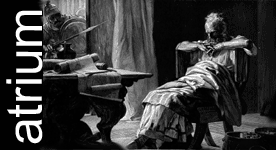We first reported on this case a couple of days ago ... AFP via the Tocqueville Connection brings us the verdict:
A courtroom battle in London over ownership of an ancient section of carved limestone relief from an archaeological site at Persepolis in Iran ended Friday in favour of an 85-year-old French widow.
Iran had hoped to persuade the High Court to rule that Denyse Berend, who bought the fragment at a public auction in New York in 1974, should hand back the artefact which had been displayed in her Paris living room for 30 years.
But after a week of legal argument, judge David Eady -- who had to decide who had "title" or ownership of the piece -- said there would be a judgment for the defendant Madame Berend, who was in court to hear the decision.
Eady said only that the defendant "succeeds". His reasons for finding against the Islamic republic and a decision on costs will be given on a date to be fixed.
Madame Berend, a specialist coin collector, was said to be "happy" at the ruling and awaited the judge's reasons "with interest", one of her legal team said afterwards.
The court was told the fragment was originally part of a wall frieze, forming part of the Northern Facade of the Eastern Staircase of the Apadana or audience hall at Persepolis, one of the ancient capitals of Persia.
Persepolis was conquered by Alexander the Great in 330 BC and from then until 1931 much of it was buried under its own ruins.
In November 1932 the Eastern Staircase was excavated. It is thought the fragment, worth between 200,000 and 300,000 pounds (304,000-457,000 euros, 395,000-592,000 dollars), was removed after that date, the court was told.
Iran brought proceedings after learning that Madame Berend had put the fragment up for sale at auction house Christie's in April 2005. The claim was based on historic title and Iranian statutory law.
Berend's legal team argued she had bought the 23.8- by 31.1-centimetre (9.4- by 12.2-inch) fragment in "good faith" and had rightful ownership or "good title" of it under French law.
